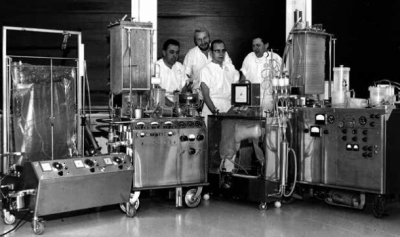
The distressing stories of people gasping for breath, not finding oxygen cylinders when they need them has become a recurrent theme during the ongoing COVID-19 pandemic. The function of oxygen in our healthy living can’t be stressed enough and times such as these offer us a stark reminder.
You must be aware of the workings of the heart and the lungs in our bodies. Among other things, they are responsible for supporting the circulation of blood through the body. And it is this blood that carries oxygen to the various parts of the body.
Need for substitutes
While all this takes place seamlessly in a healthy individual, there are occasions when organs need to be substituted with machines in order to perform certain surgeries. The heart-lung machine is one substitute that temporarily replaces the heart and lungs, making cardiac surgeries possible. An American physician called John Gibbon is to be thanked for the invention of the heart-lung machine.
The distressing stories of people gasping for breath, not finding oxygen cylinders when they need them has become a recurrent theme during the ongoing COVID-19 pandemic. The function of oxygen in our healthy living can’t be stressed enough and times such as these offer us a stark reminder.
You must be aware of the workings of the heart and the lungs in our bodies. Among other things, they are responsible for supporting the circulation of blood through the body. And it is this blood that carries oxygen to the various parts of the body.
Need for substitutes
While all this takes place seamlessly in a healthy individual, there are occasions when organs need to be substituted with machines in order to perform certain surgeries. The heart-lung machine is one substitute that temporarily replaces the heart and lungs, making cardiac surgeries possible. An American physician called John Gibbon is to be thanked for the invention of the heart-lung machine.
Life-changing experience
Gibbon became a research fellow in Edward Churchill’s laboratory at Boston City Hospital. It was during this time that he went through the experience that would inspire him to his invention. In October 1930, Gibbon assisted Dr. Churchill perform a procedure on a young woman. Even though it was unsuccessful, it led Gibbon to think that if they could have “performed part of the work of the patient’s heart and lungs outside the body”, then she could have been saved.
Following this event, Gibbon started performing feline experiments to investigate the possibility of his idea along with Mary Hopkinson, Dr. Churchill’s research assistant, and later Gibbon’s wife. Together, they experimented with cats, trying to obstruct the pulmonary arteries and pump blood through a mechanical lung. It was on May 10, 1935 that the first cat survived as Gibbon’s apparatus was able to successfully maintain its cardiac and respiratory functions. The cat had been kept alive without its own heart using extra-corporeal circulation.
Tireless pursuit
Even though World War II interrupted their work, Gibbon’s quest continued as he tirelessly worked to improve his device to make it suitable for human beings. In the 1940s, Gibbon was able to persuade IBM Corporation to provide the necessary technical expertise to make a more sophisticated device that could be used for humans.
After 18 years of perseverance during which he constantly improved his invention, Gibbon finally performed the first successful open-heart operation on May 6, 1953. Cecilia Bavolek, an 18-year-old woman, underwent successful surgery with Gibbon’s heart-lung machine substituting for her heart and lungs during the course of the operation. She had an uneventful recovery and was discharged home in less than two weeks.
Gibbon’s heart-lung machine was a giant stride towards performing certain successful operative procedures that were previously even unthinkable. In the decades since then, the heart-lung machine has been improved constantly, allowing surgeons today to not only repair defective hearts and their valves, but also perform bypass surgeries and heart transplants.
Picture Credit : Google



